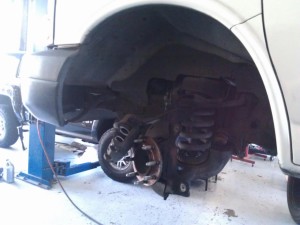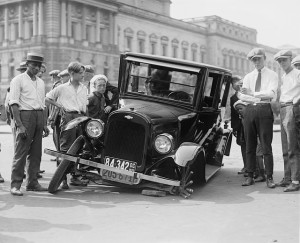Car Shocks and Struts Replacement
Car Shocks and Struts Replacement
Shocks and struts play a vital role in a car’s suspension system. They help the tires to maintain proper contact with the ground. Shocks and struts improve the stability of the car. They help to create a smooth ride on a bumpy road. But just like all other automotive parts, they will require maintenance or repair to keep the car functioning safely and efficiently.
In order to fully understand the subject of car shocks and struts replacement, you need to know exactly what car shocks and struts are and how they work in your car. Then you should be aware of the signs and symptoms of failing struts and shocks that indicate the need for urgent replacement. Here is concise guide on shocks and struts, their failure symptoms and replacement.
Call Mike at 602-548-0901!
What Are Car Shocks and Struts?
Shocks
The term “shock” is actually a short version of the word “shock-absorber”. The main function of this component is to absorb the oscillating suspension energy in the car. The shock performs this function using a set of internal valves and special oil. The oil flows through the interval valves at a given rate to provide a smoother, slower, and more predictable suspension movement. Without the presence of shocks, all the wheels of the car will bounce and vibrate erratically along rough roads.
Although shocks are critical for a smooth and safe ride, they are an additional part of the suspension system. So they can be taken out completely and the car will still be able to move. However, the movement will be noisy, bumpy and unpleasant.
Struts
Struts have a similar internal design as shocks. They also have valves and oil, but they have a different exterior design. They are encased with a complex coil spring mechanism. They perform the same basic function as shocks. They are integral part of the car’s suspension system. In fact, if they are removed, the body of the car will drop on the ground. A car cannot move without struts.
Signs that Your Car’s Shocks and Struts Need Replacement
* Swerve
These are excessive right to left or sideways movements due to steering movements, road conditions and gusty winds. You will require very frequent steering corrections, and it will become very difficult to control the vehicle as the condition gets worse.
* Loss of Traction
This can happen while accelerating, braking or negotiating a bend. The tires will not be able to grip the road properly and it will result in loss of control. The shocks and struts may not be controlling the tire and body movements effectively.
* Harsh Riding
When little bumps and pronounced tire movements are transmitted all over the vehicle, it is time to replace the shocks or struts. In this case, the ride will feel very harsh, noisy and rough. The abnormal action impedes tire performance and driver comfort.
* Ineffective Braking
As shocks and struts get worn, the tires start losing grip on the road and the braking distance increases, especially when you need to make a sudden stop. In addition, when you apply the brakes, the tires start to stop but the car body surges forward. The front of the vehicle thrusts downward while the rear receives an upward thrust.
When Should You Replace Shocks and Struts
The two major reasons for shocks and strut replacement are: age and wear. As these components get older the insulating materials experience a change in density. Subsequently, there is more vibration and noise transmitted to the car. Also, the bearings of the shock or strut mounts get worn out.
If the shocks or struts on your car have failed, you must replace them immediately. Failed shocks/struts are characterized by extreme damage that causes tire cupping and leakage of the internal oil. You should also replace these components as part of a vehicle overhaul after the car has traveled for 50,000 miles or more. Replacing the struts and shocks will enhance the performance of the vehicle and extend its useful life.
Another vital reason for replacing shocks is to be able to use the vehicle to carry heavy loads. If you go for camping regularly (with frequent off-road conditions), or you are using your car to transport heavy goods regularly, you should consider replacing your shocks with units that can meet the higher demands on your vehicle.
Finally, remember to consult a qualified auto repair shop or technician to test your car’s shocks and struts annually or after every 12,000 miles.


